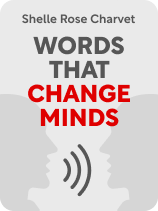

This article is an excerpt from the Shortform book guide to "Words That Change Minds" by Shelle Rose Charvet. Shortform has the world's best summaries and analyses of books you should be reading.
Like this article? Sign up for a free trial here.
Do you have a hard time getting your team members or colleagues to enthusiastically engage in a new project? Does it seem like they’re on a page that doesn’t even exist in your book?
According to influencing language expert Shelle Rose Charvet, if you learn how someone is motivated, you can consciously match their frame of reference and speak in a language they understand. She discusses six motivation patterns in a workplace context, but you can use her insights in any setting.
Continue reading to learn how to motivate people at work by speaking their motivation language.
How to Motivate People at Work
Charvet says that you can learn how to motivate people at work by understanding six motivation patterns. The majority of these patterns are based on a dichotomy between two opposites. According to Charvet, this doesn’t mean that people are either one or the other—rather, the patterns form a spectrum, and individuals often fall somewhere in between. For example, while some people prefer to work with a team and others prefer to work alone, there are also those who equally enjoy working with others and by themselves.
| Virtues of the Middle Ground The middle of the motivation pattern spectrum may be the most desirable, especially if you’re in a leadership role. In The Dichotomy of Leadership, Jocko Willink and Leif Babin assert that every characteristic of a good leader becomes counterproductive when taken to the extreme. Thus, as a leader, you should attempt to strike a healthy balance between ideals in everything you do. This may also apply to motivation patterns. For instance, a leader who can only work in collaboration with other people might struggle with tasks no one can help with (like writing reports to a senior manager), while a leader who can only work alone may struggle with tasks that require teamwork (like leading brainstorming meetings.) |
Motivation Pattern #1: Active or Passive
The first motivation pattern we’ll discuss refers to someone’s readiness to spur themselves into action: Are they active or passive? (Charvet calls this the “Level” category.) Active people progress toward their goals as quickly as possible, while passive people tend to wait and analyze the situation until the perfect opportunity arises or someone else pushes them into action.
You can tell someone is active if they speak in short, direct sentences that emphasize simple cause-and-effect sequences, asserts Charvet. To communicate effectively with an active person, mirror this effect. For example, you could say, “We’re downsizing to keep this branch profitable.”
In contrast, passive people speak in long, often meandering sentences that highlight the subtle complexities of a situation. To break downsizing news to a passive person, you might say, “Although there’s great work being done in every department, it’s likely that we’ll start running a deficit unless we downsize to reduce our current expenses.”
Motivation Pattern #2: Positively or Negatively Incentivized
The second motivation pattern describes whether someone feels more motivated by the promise of a reward or by the threat of negative consequences: Are they positively or negatively incentivized? (Charvet calls this the “Direction” category.)
According to Charvet, someone who’s positively incentivized will frequently talk about their goals—what they want to achieve and add to their life. For example, they might excitedly tell you, “If this project succeeds, we’ll have the only product of its kind on the market.” On the other hand, someone who’s negatively incentivized will tend to talk about their fears and problems—what they want to keep out of their life. They would emphasize that “Unless we get this product to market quickly, we’ll fall behind our competitors.”
To influence someone to take action, talk to positively incentivized people about opportunities they can gain and negatively incentivized people about threats they should avoid.
Motivation Pattern #3: Self-Validated or Validated by Others
The third motivation pattern refers to how people decide what to do and how they assess if they’re doing it well: They’re either self-validated or validated by others. (Charvet calls this the “Source” category.) Self-validated people only want to work if they believe they’re successfully doing something important. People validated by others only like working if someone like a boss or coworker tells them they’re doing a good job at something important.
Self-validated people make frequent judgments about their work and the work of others: For example, they might say, “My presentation at today’s meeting went well. Although I was a little less organized than Justin, my visual aids got my point across well.” In contrast, people validated by others defer to other people’s opinions when judging someone’s work: “I think I had a good presentation today. Justin told me he was impressed, and I saw Michelle nodding a lot.”
Charvet notes that because they’re so self-assured, persuading someone self-validated to change their mind can be a challenge. If you’re trying to influence them, make sure to give suggestions rather than instructions. For instance, you could say, “If you want your message to be as clear as possible, you may want to cut each of your presentation slides down to a couple of bullet points.”
People validated by others are much easier to influence—just strongly assert what you believe to be true or cite the standards of others: “You should keep your slides more concise. Michelle always responds well to a focused presentation.”
Motivation Pattern #4: Reliable or Innovative
The fourth motivation pattern describes how attached someone is to one specific way of solving a problem: They’re either reliable or innovative. (Charvet calls this the “Reason” category.) Reliable people identify one way to solve a problem and strive to consistently repeat their successes in the same way, while innovative people are always on the lookout for new and better ways to solve the same problems.
You can tell someone is reliable if they describe their actions as if they were out of their control, writes Charvet. For example, a reliable person would tell you “I had to stay six hours overtime last week to finish up that urgent project.” Innovative people, on the other hand, will dissect the factors influencing every decision they make and highlight the other choices they could have made: “I could have left that project for Monday rather than putting in extra hours, but I wanted my boss to see how dedicated I am. Plus, I thought it’d be nice to grab an overtime bonus before the holidays.”
To communicate effectively, mirror the other person’s view of problem-solving: Emphasize either the one right way to do something or the variety of options they have when approaching it.
Motivation Pattern #5: Eager for Change or Content With Stability
The fifth motivation pattern we’ll discuss refers to how often someone wants to upend the status quo: Are they eager for change or content with stability? (Charvet calls this the “Decision Factors” category.) That is, do they want to constantly shake things up in their life or keep things the same for as long as possible?
When thinking about the past, people who are more eager for change will highlight how much things have changed—they might say, “Running a nonprofit is much more fulfilling than my career managing restaurants.” Someone content with stability with the same résumé would focus on the things that stayed the same: “I’ve been a manager for the last 20 years.”
If you want to influence someone eager for change to do something, emphasize how exciting and new it is (“Going to college would be a whole new adventure for you!”). If they’re content with stability, emphasize how it’s similar to things they’ve done in the past (“I think continuing your education would really help you maintain your personal growth”).
(Shortform note: Research shows that people naturally become less eager for change and more content with stability as they age. Experts theorize this is because many older people settle into pursuits that require long-term investment—such as a lifelong career or raising children and grandchildren—and they shy away from change to protect the life they’ve built. Thus, if the language someone uses doesn’t overtly lean toward change or stability, you may be able to use their age to decide whether to influence them with more change- or stability-oriented language—at least until you get to know them better as an individual.)
Motivation Pattern #6: Ideals
The sixth motivation pattern is a bit different than the other five—instead of existing on a spectrum between two types, people can express this pattern in infinite ways. Charvet argues that everyone has a unique set of ideals, specific words that represent the things or attributes that are most important to them. (Charvet calls these ideals “Criteria.”) For instance, if someone says they love their job because they’re working toward a noble mission and get to spend time with a supportive team, “noble mission” and “supportive team” might be two of their ideals.
(Shortform note: In The Subtle Art of Not Giving a F*ck, Mark Manson contends that one major way you can improve your life is to intentionally choose your ideals. According to Manson, many people make themselves miserable by choosing to care about ideals that are out of their control, destructive, or untethered from reality—for example, the ideal of being the most well-liked salesperson on the team. He recommends choosing to care more about ideals that are controllable, constructive, and based in reality—for example, the ideal of taking personal responsibility for your life.)
If you refer to one of someone’s ideals using different words, it won’t mean the same thing to them. Charvet contends that a person’s ideals—the words themselves—are tied to myriad emotional memories that give the words their motivating power. Thus, when trying to communicate with or influence someone, only refer to their ideals using their exact words. To return to our example above, you could convince that person to volunteer at your organization by emphasizing the noble mission you and your supportive team are looking to achieve.
(Shortform note: The fact that particular words represent a vast well of emotional memories shapes the way that corporations market their products. In How Brands Grow, Byron Sharp contends that the purpose of advertising is to spread positive emotional memories related to a specific brand. Brand assets, including a brand’s memorable name and slogan, act as symbolic shorthand for all the pleasant experiences you’ve had purchasing from that brand. For this reason, when a brand changes its brand assets, it often backfires—for example, after the soda brand Sierra Mist changed its name to Starry, it severed its connection to the positive memories its customers associated with the specific words “Sierra Mist.”)

———End of Preview———
Like what you just read? Read the rest of the world's best book summary and analysis of Shelle Rose Charvet's "Words That Change Minds" at Shortform.
Here's what you'll find in our full Words That Change Minds summary:
- Why it's sometimes hard to understand what others are trying to say
- The 14 kinds of mental habits that explain how people think
- How to understand others better and build positive relationships






